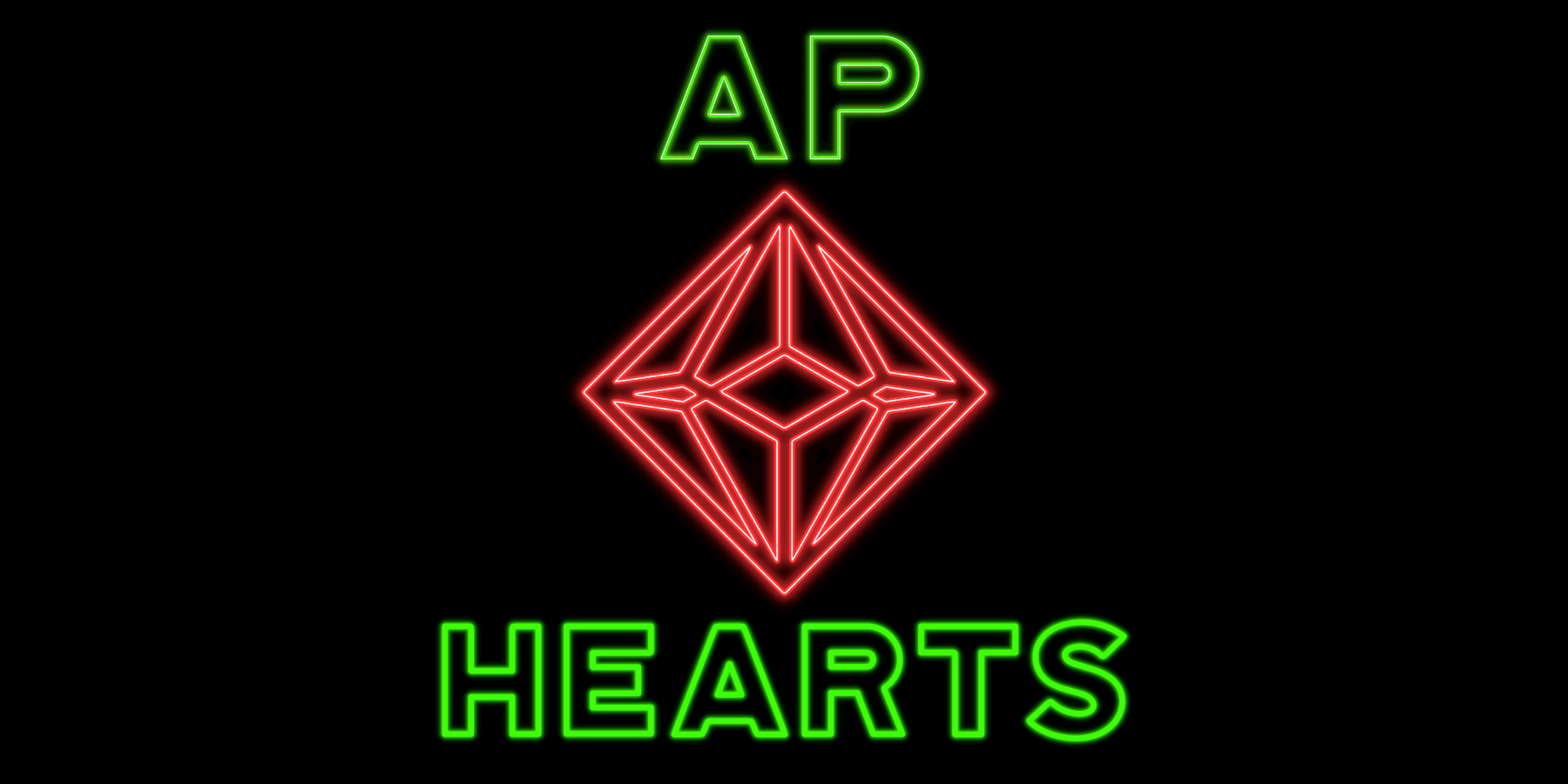I’ve been fascinated by the behind-the-scenes workings of shows and theater productions since I was a little kid. I blame The Muppet Show for this, as I always adored the scenes where Kermit tried to keep the show going despite the chaos surrounding him, as they were funny and made the world of showbiz look like a never-ending adventure where weirdos could gather and be themselves. Naturally, due to my time in the TTRPG space, this fascination has expanded to include the behind-the-scenes working of Actual Play streams, something my new TTRPG AP Hearts explores.
AP Hearts is a game that casts players as a group of Actual Play performers trying to keep their stream going despite the group’s various issues and bubbling interpersonal tensions, all while each member tries to steal the spotlight for themselves. At its core, the game explores group performance and how the blurring of fantasy and reality can create new interpersonal problems and exacerbate existing ones, something only made worse if the people performing can’t step away from the role.
Capturing The Feel Of An Actual Play Stream

The core element of AP Hearts is the dual game system. Before starting an AP Hearts session, the group will pick another TTRPG to represent the game their characters are playing on stream. During the session, the player must manage that game and AP Heart’s mechanics, representing their character attempting to manage their emotions and mental state.
This is an element I debated and fiddled with for many hours during the design process. Early versions included a second set of mechanics to represent the game the characters are playing on stream. While these versions were functional, they felt like they were lacking thematically. I quickly realized that a crucial part of the Actual Play genre’s appeal is seeing performers you like playing games that interest you, so any attempt to turn the on-stream game into an abstract would result in the game no longer capturing the Actual Play atmosphere.
This decision influenced every other part of AP Hearts. Most notably, I had to make AP Heart’s core mechanics intuitive and easy to engage with while focusing on another game. Because of this, I built the game around card management, as players can draw, trade, and discard cards without disturbing the GM or other players. This is also why the game forgoes a traditional stat system. I didn’t want players to accidentally confuse their AP Hearts stats and the stats of the TTRPG their character is playing on-stage during intense moments or feel overwhelmed by a barrage of different numbers.
I also built the game around card management because I think cards moving from hand to hand is a neat way of mechanically representing the brain, showing how thoughts and ideas quickly transmit from person to person.
Making Drama Come Naturally

However, despite my desire to keep things simple, I decided to play into the overwhelming nature of playing two games with the Breaking Character mechanic. If a player ends up with too many cards from one suite in their hand, their character can’t keep their emotions under control, and they end up Breaking Character. Something that can lead to characters eventually being eliminated from the game.
On paper, maintaining a balanced hand of cards doesn’t sound that tricky, but during playtesting, I realized how hard it is to do while also focusing on another game. It’s far too easy to get fixated on one of the other game’s mechanics and lose track of what cards are in your hand, leading to you failing to remove them in time. This perfectly represents the emotional bleed that often comes with performing.
When you become so focused on one part of the show, you lose track of your thoughts, leading to you blurting out something you didn’t mean to say or become so distracted you miss a cue you were meant to hit, dragging you into a negative spiral of self-talk that can lead to issues if left unchecked.
Creating A Drama Spiral
I designed the character’s abilities to work with this. Each character has two actions that trigger when they do certain things in the on-stream game, be it interrupting someone else or citing rules. At first, players will likely use these sparingly or by accident. However, as cards move between hands, players will be forced to use their abilities more frequently to manage their character’s emotions. This, of course, forces the other players to use their moves more often, turning the game into a constantly escalating cycle of drama as the characters start to screw each other over more and more, which can easily lead to the group totally breaking apart by the end of the game.
I’m deeply proud of AP Hearts because it combines my love for intense, dramatic social games with my fascination with the TTRPG AP space and its often emotionally complex behind-the-scenes workings. So, if you’re looking for a game where you can embrace your inner diva or spotlight chaser, you should give AP Hearts a shot, as I think you’ll enjoy it!
Jonathon Greenall is a freelance writer, artist, and tabletop roleplaying game designer who has written for CBR, Polygon, Nintendo Life, Gayley Dreadful, Enbylife, and many other publications. They have also published several popular and highly-praised tabletop roleplaying games including “You Have One Ability….The Ability To Fuck This Up,” “Macarons, Milkshakes, And Magic,” and “Wander Wizards.”
Jonathon has always been fascinated by media, from the big hitters to the small, obscure, and often overlooked titles that linger on the sidelines, capturing both the on and off-camera stories that make these shows so fascinating.
Jonathon is also a major anime fan, having been exposed to the medium through shows like Sailor Moon and Revolutionary Girl Utena. Since then, Jonathon has maintained a passion for anime, watching most new shows each season and hunting down overlooked gems from previous ones.

